Charts of the Week
Current economic trends from 30 May to 3 June 2022: active and inactive population, turnover in market services, trade in goods and other charts
The survey unemployment rate fell further year-on-year in the first quarter and the number of people in employment increased. The volume of student work also increased by more than 50%, reflecting the growing demand for various forms of work amid labour shortages and the continued growth in economic activity. Turnover in market services increased in current terms in the first quarter and was significantly higher year-on-year, partly due to last year’s low base. Compared to the same period before the epidemic, turnover was significantly lower only in travel agencies. Trade in goods with EU Member States declined in current terms in April. Uncertainty related to supply chain disruptions, rising inflation and the Russian-Ukrainian war is increasing; export expectations are deteriorating. The year-on-year increase in consumer prices strengthened further in May. The price increase is mainly due to higher energy prices, which are increasingly being passed on to final food prices in the face of higher prices of food commodities. Prices for services are also rising. Value of fiscally verified invoices was almost a fifth higher year-on-year in nominal terms in the second half of May.
Active and inactive population, Q1 2022
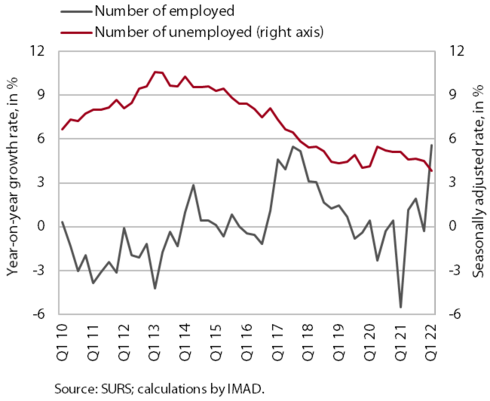
According to the survey data, the (already low) unemployment level fell further in the first quarter. The number of unemployed fell by 15.2% compared to the previous quarter (according to seasonally adjusted data) and by 21.4% year-on-year (according to original data). The survey unemployment rate decreased by 1.3 p.p. year-on-year, to 4.3%. At the beginning of the year, the number of people in employment increased by 5.6% year-on-year, with the volume of student work increasing by 56%, indicating a strong increase in demand for all forms of work.
Turnover in market services, March 2022
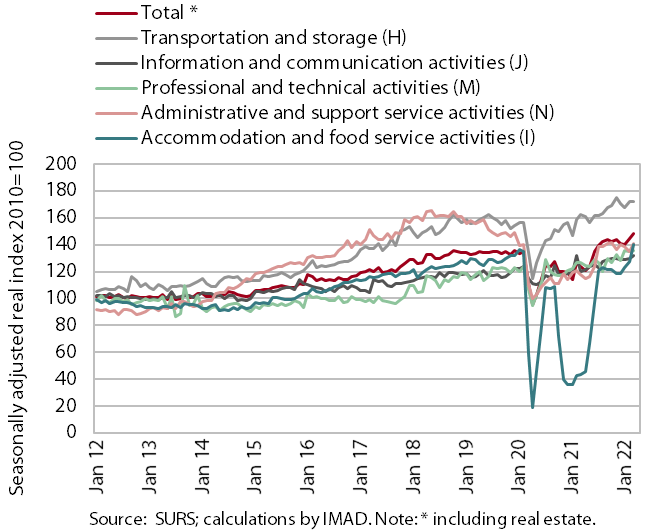
Total real turnover in market services continued to increase in the first quarter. It was up by 1.6% compared to the last quarter of last year and by 20% year-on-year given the low base in the first quarter of 2021. Current growth was strongest in accommodation and food service activities, where turnover rebounded after falling in the last quarter of 2021. Turnover continued to grow in professional and technical activities, driven by a strong accelerated growth in architectural and engineering services. Turnover growth in information and communication activities slowed due to a further decline in turnover of telecommunication services, while turnover of computer services exports increased. After high growth in the previous quarter, turnover in transportation declined slightly, this time especially in storage and postal activities. Turnover further declined in administrative and support service activities. This reflected lower turnover in all segments, with the exception of employment services, where it has mostly increased since December 2021. The lag compared to pre-epidemic turnover (Q1 2020) was only noticeable in travel agencies (by 28%).
Trade in goods, April 2022
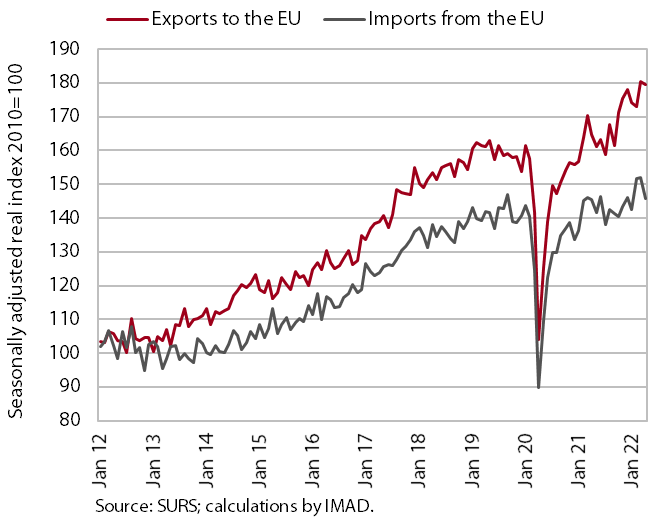
Trade in goods with EU Member States declined at the beginning of the second quarter; uncertainty is growing. The decline in real exports to EU Member States (seasonally adjusted) was largely influenced by increasing uncertainty in Slovenia’s main trading partners related to supply chain disruptions, rising inflation and the continuation of the war in Ukraine. After several months of growth, imports from EU Member States also fell sharply in April. The high level of uncertainty in the international environment has significantly affected sentiment in export-oriented activities in recent months, as export expectations and orders continued to decline in May.
Inflation, May 2022
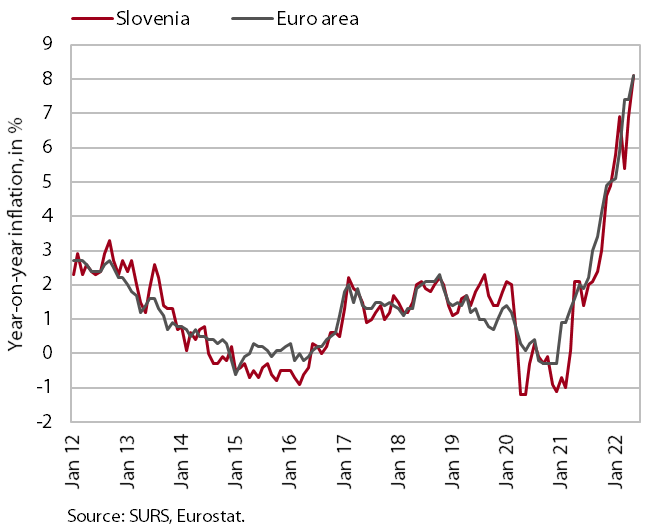
Inflation rose sharply again in April, to 8.1% year-on-year. The price increase was high across most groups of goods and services. Higher energy prices are an important contributor to year-on-year inflation. Petroleum products, whose prices increased by almost 40% year-on-year, contributed almost 2 p.p. to inflation. Prices of gas and heat energy are also rising sharply (by more than 50% and 40% respectively), contributing about 1 p.p. to inflation. Electricity prices fell by about 15% year-on-year due to the temporary exemption from payment of certain charges in February (which is included in the monthly inflation rate for March), but the year-on-year decline has almost halved in the last two months due to high month-on-month growth. Higher energy and food commodity prices, which are increasingly affected by geopolitical tensions, are having a growing impact on final food prices, which rose by 11.1% year-on-year. Prices for durable goods rose by 9% year-on-year in the last two months, while prices for semi-durable goods rose by 3%. Prices for services rose by almost 5%. Of the 12 groups of goods and services, prices were lower year-on-year only in the group communication (-5.9%).
Value of fiscally verified invoices, in nominal terms, 15–28 May 2022
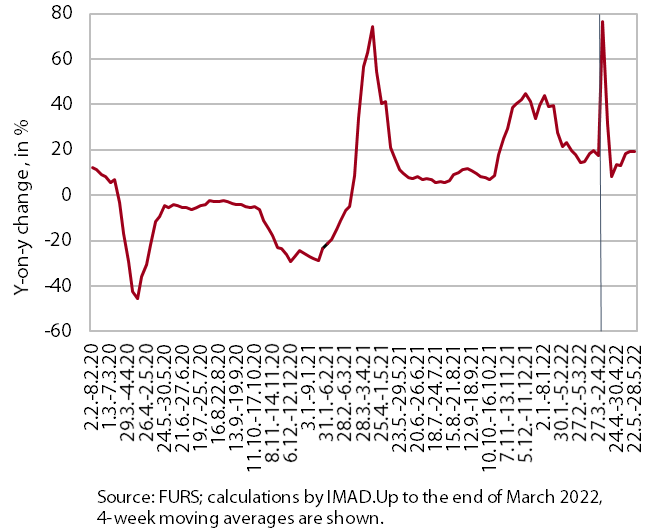
Value of fiscally verified invoices between 15 and 28 May 2022 was 19% higher year-on-year in nominal terms and 24% higher than in the same period of 2019. Year-on-year growth was slightly higher than in the previous two weeks. This was mainly due to higher growth in trade (mainly due to higher growth in retail and wholesale trade) and in certain personal services, as well as in arts, entertainment and recreation. Growth in the accommodation and food service activities declined slightly (but the value was still more than doubled) as business restrictions were further lifted last May.
